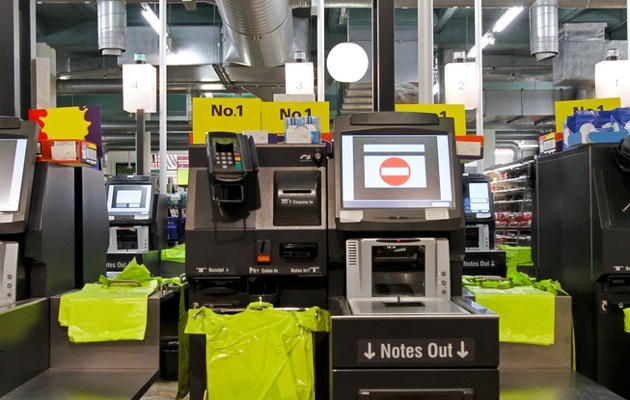In the previous article in the “Practicing What We Preach” series, we discussed how critical it is to carefully and thoughtfully establish the initial tone of a conversation with everyone—be it your customers, users, managers, or employees. First impressions are immediate and not easily undone; if the person that you are engaging is put off by your initial tone, the conversation could be finished before it even begins.
Similarly, in user experience design, the initial salience of your design can make or break the level of engagement with the user and become the point where your project fails before the user has even given the experience a fair chance. We learned that this same principle can and should be applied to all aspects of organizational management—including, for the purposes of that article, to the on-boarding process of new employees.
Suppose that we have designed an experience that creates a positive and meaningful impression establishing the initial trust that is needed for the user or employee to continue through our experience. How do we sustain this trust and engagement? What about the experience will continue to pique interest and differentiate us from our competitors?
In a Word: Empathy
“If there is any one secret of success, it lies in the ability to get the other person’s point of view and see things from his angle as well as your own.” —Henry Ford
As UX professionals, it is our imperative to create valuable and engaging experiences for our users. We often have to play the role of “user advocate” on project teams where other requirements and constraints can push our recommendations for more user-centric designs to the bottom of the list of priorities. In this article, I will discuss not only why empathy is critical—offering a truly competitive advantage when designing experiences for users—but also why this same ability is key to managing your project teams, your department, and your entire organization.
In the past, being empathetic in the professional world has been marginalized as being “too soft” or “too touchy-feely.” However, empathetic approaches should be implemented both internally and externally and do not fit into any pre-defined box.
Internally, for example, you could apply an empathetic approach in the form of regular one-on-one meetings with your employees to gather their opinions on the organization as a whole. An example of how your organization could employ empathy on an external level, would be adopting a mission to provide your customers with the most valuable experience measured by how positively your product has improved their daily lives.
Unsurprisingly, in many cases, it’s very difficult to quantify the ROI from taking a more empathetic stance as an organization, both with respect to the management of your employees and to product development. However, one must not ignore increasingly competitive markets—a result of the economic crisis of 2008. After all, massive layoffs and severe cutbacks made consumers more budget-minded, and more demanding of better products and experiences. Designing products that provided value as well as a positive user experience that was sensitive and responsive to users’ unique backgrounds, needs and goals, became even more of a priority.
“When your organization develops a shared and intuitive vibe for what’s going on in the world, you’re able to see new opportunities faster than your competitors—long before the rest of us read about them in The Wall Street Journal.”—Dev Patnaik, Founder and Principal, Jump Associates
The Best UX is Empathetic by Nature
A user-centered design approach should exist at all points of engagement. Subsequently, all interactions and public communications should be seen as engagements with either well-established users or potential users. This is where the power of user research and user-centered experience design can take products and organizations to the next level with customers.
Mike Markkula (one of the early founders of Apple) was the first to pronounce ’empathy’ as one of the company’s core principles, declaring, “We [at Apple] will truly understand [customers’] needs better than any other company.” At a time when computers were not yet accessible to non-specialists or non-expert users, the notion of empathizing with consumers set Apple on the path of user-centric, forward-looking design.
It is with this innovative approach in mind that we, as user experience designers, should seek out as many user perspectives as we can to inform our designs. User research, in its many forms, seeks to observe, synthesize, and report the unique perspectives of users in an effort to ultimately represent these perspectives in our designs. As stated by psychologist Jacob Belzen, “Empathy means both understanding others on their own terms and bringing them within the orbit of one’s own experience.”
In many instances, our role as an empathetic user advocate helps us make design decisions when there is no concrete or “correct” direction in which to take our designs. Our user-centered intuition is formed by the empathy we feel for our users and is fortified by research—embedding ourselves in our users’ environments. Ethnographic studies provide us the ability to immerse ourselves in our users’ day-to-day lives. Through these studies, we gain insight and unearth opportunities where we can improve users’ lives through our designs.
There are countless examples where more comprehensive user research would have turned a product failure into a success. For example, when self-service checkout machines first appeared in grocery stores, initially replacing all conventional checkout lanes, there was an unforeseen negative effect on older customers who were accustomed to interacting with real cashiers. For some of these users, a trip to the grocery store was not just a way of buying groceries, but served as the only human interaction they might have on a regular basis. Other customers claimed that the new self-service checkout machines were more hassle than they were worth, with errors outnumbering successful transactions. Furthermore, since the machines replaced the cashiers, fewer staff members were present to assist customers who experienced errors in the self-service checkout process.
As the esteemed cognitive scientist and design critic Donald Norman suggests, “Design in support of people.” If more research had been done when stores first explored self-service checkout processes, it would have been discovered that many customers preferred and still needed in-person cashiers, even if self-service checkout was an option to them. Prioritizing an empathetic approach to gathering requirements could have prevented this costly misstep and gross misunderstanding of user needs.
Let Empathy Lead the Way Forward
“Especially in tough times, empathy is one competency that companies can’t afford not to develop. It can help them to move more quickly, make better decisions, and create new businesses that can fuel their growth. It can even secure the future of their organization. And all that innovation can start with empathy.”—Dev Patnaik
Daniel Goleman brought the term emotional intelligence to the business world with regard to leadership characteristics. In his studies of competency models (i.e., models developed by organizations to help identify, train, and support promising leaders) Goleman looked at how managers in global organizations identified the qualities that existed in the organization’s top leaders. What he found was that “the most effective leaders had a high degree of emotional intelligence.”
In fact, the higher the leader was ranked, the more emotional intelligence they were perceived to have. Empathy is integral to emotional intelligence, and is most easily recognized within it. Goleman is careful to explain that empathy for a leader in an organization, “doesn’t mean adopting other people’s emotions as one’s own and trying to please everyone. Rather, empathy means thoughtfully considering employees’ feelings – along with other factors—in the process of making intelligent decisions.”
To better illustrate the importance of empathy as a leadership quality, Goleman cites a situation that he observed where two brokerage companies merged, which brought with it the usual redundancies and subsequent clean-up of the new company. He recalls two very different approaches that two managers (one from each company) used, and which approach led to a better outcome.
The first manager was so pre-occupied with his own fears of how the merger would affect him that he paid no attention to his employees’ fears. The second manager approached his employees, admitting his own fears and promising that he would keep them up to date with any news. Can you guess which department stayed productive, efficient, and effective longer at the newly merged company?
This example is not an uncommon one, especially in an economy where more and more companies are being bought and merged with other companies that, only days before, were their direct competitors. Mergers tend to be carried out with very uncertain expectation. Most of the time, due to legal restrictions, even the top-most executives don’t know the final outcome until the eleventh hour. It is in this type of chaotic and unnerving environment that an empathetic leader is needed most.
All of us have seen or heard of such individuals who, when faced with a difficult and uncertain situation, find a way to connect and empathize with their employees. I knew of one executive VP, who upon merging with another company, took the time to not only talk one-on-one with all of his employees, but also introduce himself to all of the other company’s employees and meet with them one-on-one to hear about their fears.
While it was impossible for him to promise that he could address and assuage all of their anxieties, he did assure each person that he would keep the lines of communication open day or night, and that they could always reach him to discuss anything. He promised to communicate any news to them in a timely manner and when employees came to him feeling that he did not disperse news effectively or efficiently enough he addressed the concern and the reasoning to all of the employees publically within the newly merged organization.
It is this type of leader who knows how to properly utilize an empathetic approach that is so important in managing an organization. Understanding how to balance your role as a leader and manager for your employees, actively seeking out their concerns, and finding a way to acknowledge and address them without dismissing others’ contradicting concerns is the complex nature of a true leader, user experience designer, and user advocate.
Promoting empathy within your organization can foster innovation, facilitate problem solving, reach new customers, and inject new life and competitive advantages across all of your organizations’ internal and external interactions. Understanding and championing the need for empathy sets the bar high, and not only for your professional pursuits. It will also inspire others who have experienced firsthand the power of empathy.
Images of woman consoling a friend, self-checkout kiosk, and loosened tie courtesy Shutterstock.









